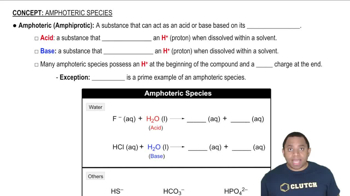Which one of these statements about formal charge is true? (a) Formal charge is the same as oxidation number. (b) To draw the best Lewis structure, you should minimize formal charge. (c) Formal charge takes into account the different electronegativities of the atoms in a molecule. (d) Formal charge is most useful for ionic compounds. (e) Formal charge is used in calculating the dipole moment of a diatomic molecule.
(b) With what allotrope of oxygen is it isoelectronic?
 Verified step by step guidance
Verified step by step guidance
Verified video answer for a similar problem:
Key Concepts
Isoelectronic Species

Allotropes of Oxygen

Electron Configuration

For each of the following ions of nitrogen and oxygen, write a single Lewis structure that obeys the octet rule, and calculate the oxidation numbers and formal charges on all the atoms: c. NO2+.
Consider the formate ion, HCO2-, which is the anion formed when formic acid loses an H+ ion. The H and the two O atoms are bonded to the central C atom. (b) Are resonance structures needed to describe the structure?
Predict the ordering, from shortest to longest, of the bond lengths in CO, CO2, and CO32- .
Consider a Lewis structure for SO3 that satisfies the octet rule. Which of the following statements is or are true?
i. SO3 has three equivalent resonance structures.
ii. There are one shorter and two longer S—O bond lengths in SO3.
iii. The S atom in SO3 has a nonzero formal charge.
